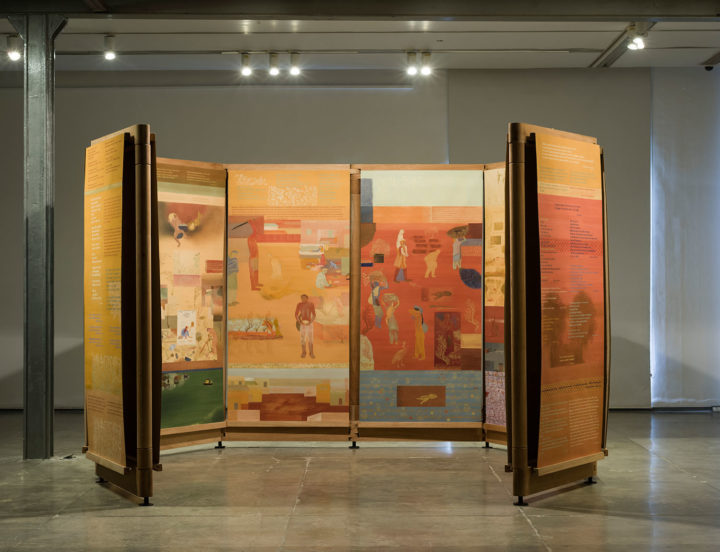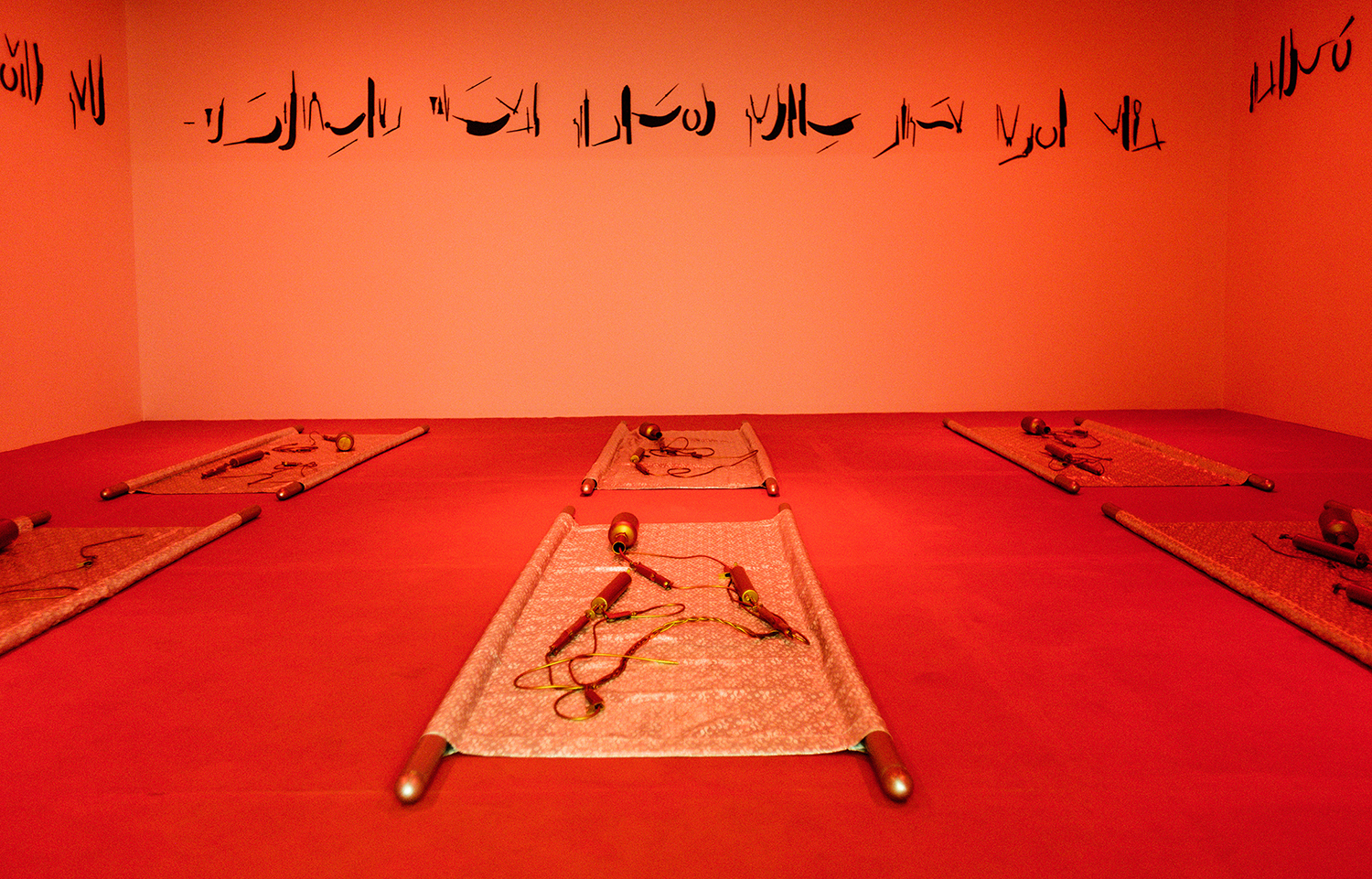I’m towing my boat across the ocean with a thread.
Will He hear me and help me across?
Or am I seeping away like water from a half-baked cup?
Wander, my poor soul, you’re not going home anytime soon.
Kashmiri mystic Lal Ded’s words (translated by Ranjit Hoskote) are inscribed on a free-hanging canvas along with other poems and excerpts of poems that speak of separation, migration, statelessness and waiting without an end in sight.
Sixteen such canvas scrolls hang, back-to-back, from a wooden and metallic structural support that resembles a folding screen with eight leaves or panels. The work, by Nilima Sheikh, titled Terrain: Carrying Across, Leaving Behind (2016–17), has been placed in the far corner of the gallery space. Arranged in an arc, it draws you in and enfolds you in its multiplicity of voices and images.
Sheikh’s casein tempera paintings, on canvas supports measuring nearly seven by three feet, attempt to illustrate the histories of North India, including the Partition of Punjab in 1947, by translating discursive text, folklore and poetry into a pictorial language. To achieve this, she engages with other histories as well as poetic, craft and visual traditions from India and East Asia. Prominent among these extrinsic influences is her collaboration with Sanjay Soni and the family of Vishnu Prasad Soni of Mathura in Northern India, who are practitioners of Sanjhi, the traditional art of designing and cutting paper stencils. The motifs, painted with the aid of the Sanjhi stencils, add a layer to the canvas and appear in all the works. This pattern of recurrence is also true of the illustrated characters and stories that appear in Sheikh’s works. Contextual texts extracted from historical accounts, folktales, fiction, poetry and journalism are stenciled either on the top sections of the scrolls or positioned among the illustrations — maintaining a rhythm of interplay between word and image.
The work was first exhibited at Documenta 14 in Kassel earlier this year. In the current exhibition, it is accompanied by eleven new smaller works displayed in the adjacent “Wooden Room.” Themes of lamentation, displacement, longing and memory echo in these tempera paintings made on handmade Sanganer paper.




